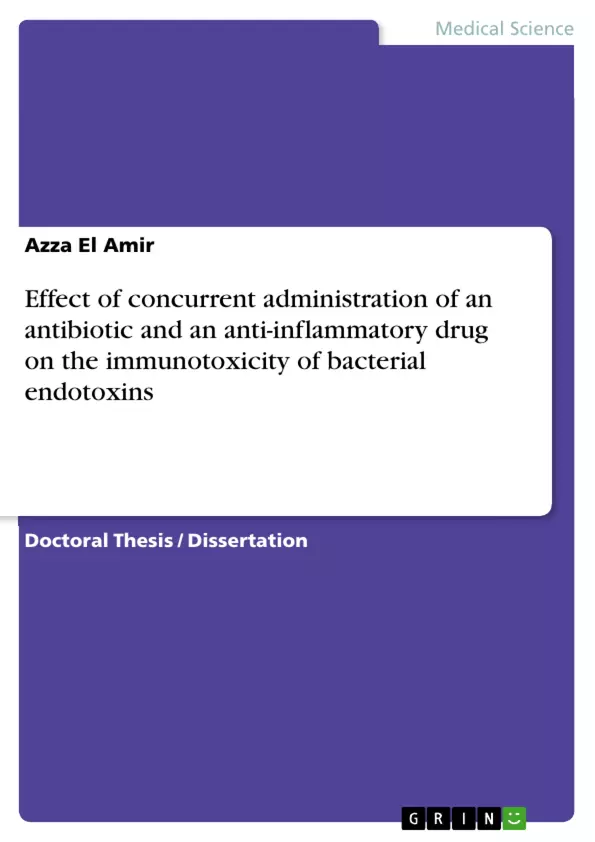P. aeruginosa is a gram-negative bacterium that causes a variety of diseases in compromised hosts. Bacterial endotoxins such as LPS are the major outer surface membrane components present in almost all gram-negative bacteria and act as extremely strong stimulators of innate immunity and inflammation of the airway. The present study was undertaken to determine the effect of combined administration of Gentamicin (GENT) as antibiotic and Dexamethasone (DEXA) as ant-inflammatory drug on some physiological, immunological and histological parameters. After determination of LD50 of P. aeruginosa, mice groups were injected with DEXA, GENT and LPS alone or in combination. LPS single injection caused a significant increase of total protein, globulin, total leukocyte count, lymphocytes, neutrophils and level of IgM and IgG. DEXA induced an increase of serum total lipid, ALT and AST levels, neutrophilia and lymphopenia. GENT administration increased serum total protein, globulin, total lipid, ALT and AST levels. Physiological and immunological examination demonstrated that combined treatment has a significant effect as decreaseing serum total protein, globulin, lymphocytes and IgG level than single treatment. Histological examination demonstrated that the inflammation of thymus, spleen, lymph node and liver decreases in mice received combined treatment than those received individual treatment. Concurrent administration of DEXA and GENT has greatest effect in protecting organs against damage in case of endotoximia.
Inhaltsverzeichnis (Table of Contents)
- Abstract
- Introduction and Aim of Work
- Review of Literature
- Materials and Methods
- Results
- Discussion
- Summary
- References
Zielsetzung und Themenschwerpunkte (Objectives and Key Themes)
This study investigates the impact of concurrent administration of an antibiotic (Gentamicin) and an anti-inflammatory drug (Dexamethasone) on the immunotoxicity of bacterial endotoxins. The focus is on the effects of these drugs on physiological, immunological, and histological parameters in mice challenged with Pseudomonas aeruginosa endotoxin (LPS).
- Immunotoxicity of bacterial endotoxins
- Effects of Gentamicin and Dexamethasone on immune responses
- Physiological and histological changes induced by LPS, Gentamicin, and Dexamethasone
- The impact of combined drug administration on endotoxemia
- Potential protective effects of combined treatment against organ damage
Zusammenfassung der Kapitel (Chapter Summaries)
The "Abstract" provides a concise overview of the study, highlighting the key findings. "Introduction and Aim of Work" introduces Pseudomonas aeruginosa and its endotoxin (LPS), emphasizing their role in infections and the potential dangers of endotoxemia. The "Review of Literature" delves into previous research on LPS, its effects on the immune system, and the potential benefits of glucocorticoids and aminoglycoside antibiotics in managing endotoxin-related complications.
Schlüsselwörter (Keywords)
This study focuses on the key concepts of Pseudomonas aeruginosa, bacterial endotoxin (LPS), Dexamethasone, Gentamicin, immunotoxicity, inflammation, physiological parameters, immunological responses, and histological changes. The research also explores the potential protective effects of combined treatment against organ damage in cases of endotoxemia.
- Quote paper
- Azza El Amir (Author), 2014, Effect of concurrent administration of an antibiotic and an anti-inflammatory drug on the immunotoxicity of bacterial endotoxins, Munich, GRIN Verlag, https://www.grin.com/document/276241



